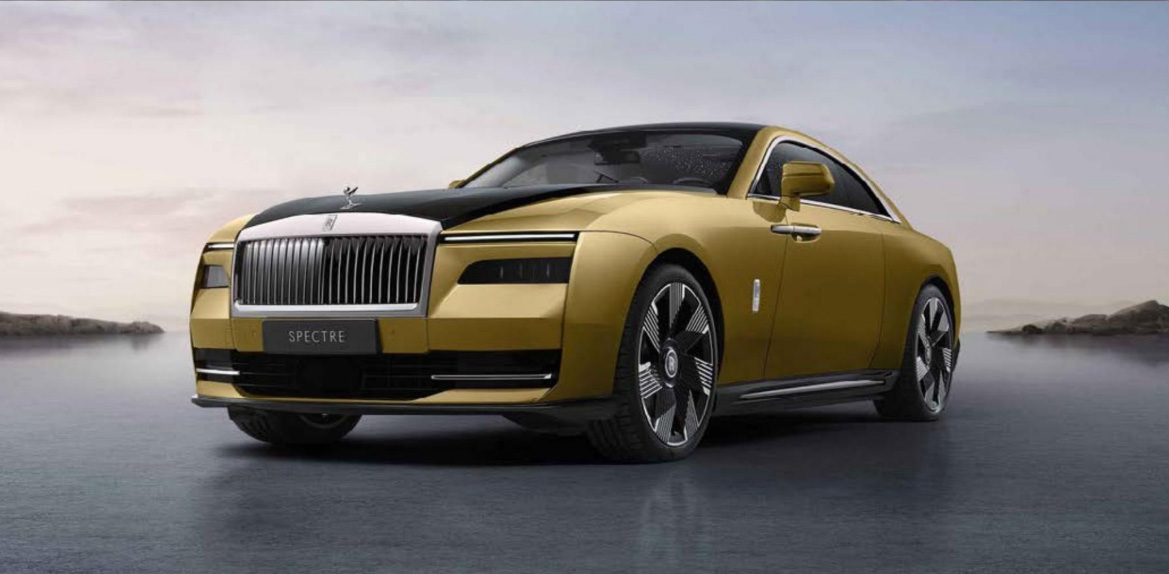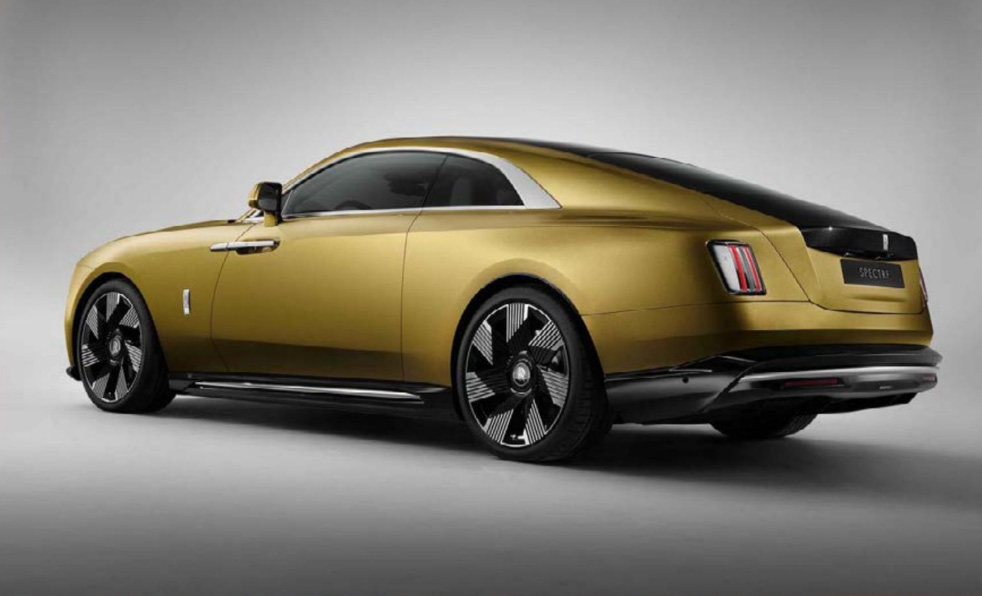The 2024 Rolls-Royce Spectre

An Electrifying Spirit
STEALTH. THAT’S AN INTERESTING WORD TO USE FOR AN ULTRA-LUXURY ROLLS-ROYCE, BUT LET ME FINISH. I use the term advisedly as this is a car that, while gorgeous and even imposing to look at, is almost silent when underway, and, due to its very aerodynamic design, it even slices quietly through the air. As I said, stealth. But why isn’t the name spelled correctly, with the “er” at the end? Maybe it’s to give you a clue that things are not what they always seem, especially when it comes to the Geniuses of Goodwood, the legendary home of Rolls-Royce. Definitions of the word “specter” include a phantom or a ghost, so now we’re on to something, given that Rolls-Royce’s Spectre is a close relative of both the Phantom and their Ghost.
Now that we’ve resolved that haunting issue, we can move on to this wonderful vehicle, which the company claims is the “world’s first ultra-luxury, all-electric super coupe.” While the vehicle bears some resemblance to the Rolls-Royce Wraith — a long, two-door hardtop coupe with a rooftop sloping elegantly to the trailing edge of the boot (trunk) — in person, it appears to be a distinctly different car. First, aerodynamics are more important in an all-electric car (did I forget to mention that there’s no internal combustion engine (ICE) in sight?). When a vehicle is battery-powered, the impact of the air on the moving car can seriously affect the vehicle’s range, so the creators seek to eke out as much “slipperiness” as they can, in this case, canting the lovely Pantheon grille slightly rearwards, adjusting the height and angle of the Spirt of Ecstasy, redesigning the wheels-to cut through the air better, and, of course, adjust every shape and surface of the body so that the wind becomes less of an obstacle. The result of all this effort is to cause less interference from the air when the Spectre is in motion.
Weight is another metric that can impact the ability of an electric vehicle to go far, and here there is little choice since batteries are heavy. To produce the same amount of energy that resides in a one-gallon can of gasoline – requires batteries that take several times the size—and weight—of that gas can. Ironically, creating an electric car that is lighter is a supreme challenge since the batteries themselves—the source of the motivating power — weigh so much. By one estimate, the Spectre’s batteries weigh more than 1,500 pounds. Adding to the heft is about 400 pounds of sound-deadening materials, so the Spectre must haul around 2,000 pounds of batteries and acoustic materials, which, of course, explains why the Spectre tips the scales at an impressive 6,400 pounds.

What will be of most importance to Rolls-Royce buyers is what it’s like to drive or be chauffeured in) a Spectre. In a word: sublime. From the first touch of the door handle, it’s clearly apparent that this is an extremely well-made car. Looks aside (though I am a big fan of the looks), the feel of the car is wonderful at every tactile engagement (“touch” seems too plebian a word for this car). The door handles feel as if they were carved from silver ingots, while the controls for everything one needs have an unmistakable quality. Even the famous push-pull knobs for the air-conditioning have retained their historic stature, and although they now operate the actual air system via electronics, it does feel like one is actuating a highly-machined metal air door.
Adjust the column-mounted gear lever (please pronounce that leever) into the drive position, and off you go; depending upon the propensity of your right foot, it may be GO. The electric motor is estimated to produce over 575 horsepower and over 650 pound-feet of torque (Rolls-Royce typically indicates that their engines’ power is “adequate”). When you factor in the weight of the car, it’s a pleasant surprise to find that the power metrics allow the car to accelerate to 60 mph in out over four seconds. (Note, however, that Rolls-Royce has built in some delay before the delivery of full power, much like the feeling of the legendary V12 Rolls-Royce, which purposely had a slight lag as Rolls-Royce owners don’t want to experience whiplash upon acceleration.) This is not your grandfather’s Rolls-Royce unless he was Barney Oldfield. And to balance out that prodigious power, the Spectres brakes act in a lovely concert with the regeneration of the electric motor upon deceleration. (Rolls-Royce has thoughtfully allowed regen to be toggled on and off, so you don’t spill your champagne when being driven ever-so-elegantly, and to the opera.)

Now let’s look at handling. One rarely puts “Rolls-Royce” and “handling” together, but the Spectre turns the table on that measure, too. We’ve already seen that “performance” has entered the Rolls-Royce vernacular, but to my surprise and delight, this big coupe really can handle. As is typical, the suspension system on the Rolls-Royce has a name — the Planar System — which implies that the system runs in all directions. First utilized in the Ghost, Rolls-Royce engineers explain that all of the systems work in tandem so that the amount of the Spectre’s left or right lean in a curve, the forward or rearward bias from braking or accelerating, and the angle of the front wheels based on the steering input all are calculated in milliseconds so that the suspension can respond accordingly. While the Spectre maintains the legendary “magic carpet ride” for which Rolls-Royce is so well-known, the ability of the suspension to counteract lean and other G forces is remarkable so that the major twisties do not upset the car’s aplomb.
This latest “Roller” is a force of nature in that it is stunning to behold. It cossets the occupant in luxurious splendor, handles like a dream, and performs like a — sports car. The company likes to say that they designed a Rolls-Royce first and an electric car second. It is clear they have done exactly that.


Sorry, the comment form is closed at this time.